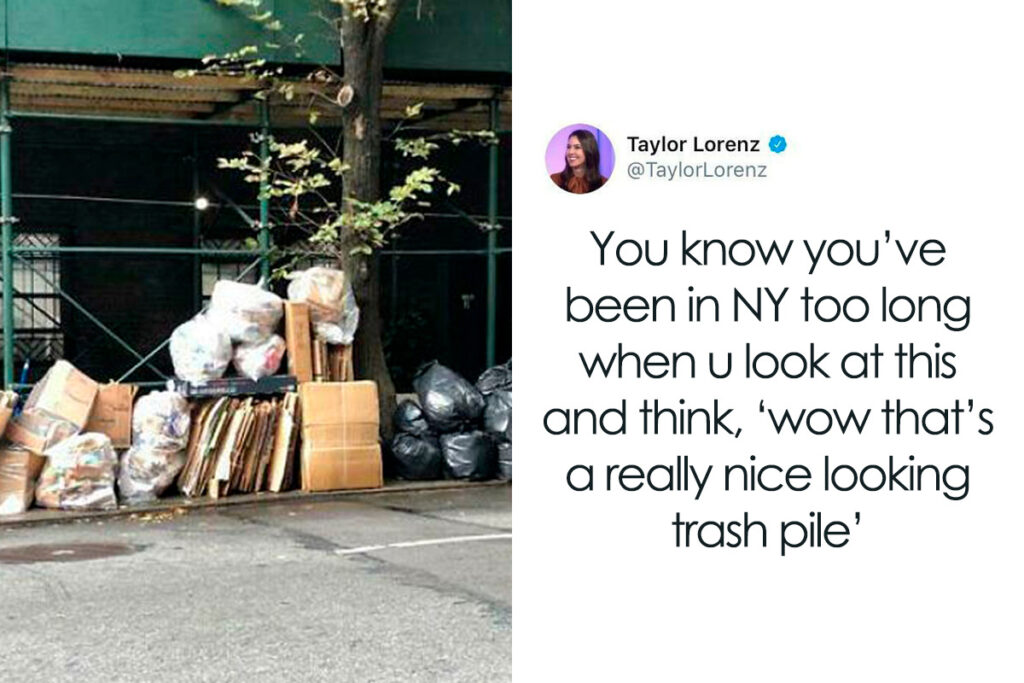Rats, pizza slices, bright lights on Broadway, and yellow cabs are some of the things that make New York City famous.
Millions of mice who live in New York City find a feast on the mountains of black trash bags that litter the narrow city pavements.
However, with local officials starting a “garbage revolution” to clean up the streets, such disgusting eyesores could soon be a thing of the past.
More than 200,000 food-selling establishments have been forced to keep the millions of tons of trash they generate annually in hard-lidded containers since the beginning of March.
By 2026, residential structures will also need to use these containers; Buenos Aires, Madrid, Barcelona, and other cities’ practices influenced this policy.
In the northern Harlem area of Manhattan, a pilot program is in progress.
The new container deployment would eventually result in the loss of some 150,000 parking spaces in the city, a constant source of annoyance for many New Yorkers. However, supporters argue that the positive outcomes of the cleanup might overshadow any protest.
A resident of Harlem named Ron James commented, “It is a shift for me.” “I often have to travel across the streets when I arrive at night in order to avoid the rats that are strolling down the sidewalk.”
“I am scarcely seeing rats on the streets,” he continued.
Maxwell Rodriguez, a different resident, expressed his gratitude that his neighborhood is no longer subject to fines for having trash bags left on the pavement.
The hard-lidded containers ought to deter human scavengers as well, since they frequently rip apart plastic bags in their quest for bottles or cans to resell for money.
According to metropolis council statistics, the 8.5 million-person metropolis and the millions of visitors who visit it each year generate around 20 million tons of waste every day, with companies producing more than half of it.
A day’s worth of garbage bags, according to the council, could stretch 27 miles (43 kilometers), which is five miles beyond Manhattan Island’s circumference.
While businesses utilize private waste collection services, the city’s sanitation department employs around 10,000 people to handle garbage from homes, businesses, schools, and hospitals.
One of the world’s most crowded cities is New York, especially Manhattan, where the majority of the 1.7 million residents live in towering skyscrapers with little room between them.
Finding room for large containers that can accommodate the consumerism-obsessed culture’s habit of consuming and then discarding what it buys is a challenging task.
According to Columbia University environmental and public affairs professor Steven Cohen, it is a “major concern.”
Placement of containers is practically limited to sidewalks, which encroach on pedestrian space, or roadways, which exacerbate traffic congestion.
Experts predict that in certain areas, the containers will occupy a full quarter of the pavement.
To lift and remove the new containers, the city will need to install vehicles with unique adaptations. Currently, sanitation workers must perform that labor by hand, one bag at a time, which is a physically taxing task.
Commissioner of municipal sanitation Jessica Tisch stated that “every New Yorker deserves a solution that cleans their streets” and that “these workers deserve a solution that protects their bodies.”
The garbage of the city has ended up in a network of waste-to-energy plants or landfills in neighboring states as far away as South Carolina, more than 700 miles away, since the closing of the biggest landfill in the world, on the New York borough of Staten Island, in 2001.
“It is unpleasant to live close to a garbage transfer facility,” said Cohen, a sustainability expert at Columbia.
However, he finds hope among the garbage mountains. With the use of artificial intelligence, he thinks garbage may become a significant new source of energy through a paradigm change.
He continues, saying that now less than 10% of all garbage is recycled.
Because the present rate of recycling organic waste is less than three percent, the city has started a program to offer specific compost containers, which will be required as of next year.
According to Cohen, every piece of food waste will be recycled and either composted or transformed into nitrogen or methane fertilizer using a device known as an anaerobic digester.
He stated that it will take some time for people to adjust to the new strategy.
“Any major shift this significant will take several years to fully show up in a city this size,” he said.
“But I believe it will occur.”


Why does ANYONE live in such a Hell hole?
One area of homeless people took over 30 acres near an overpass about 20 miles from me. It took the county 2 months, they used bulldozers and the biggest containers to haul the waste. They had to wear hazard suits because of needles, drugs and human waste. This cost 75 dollars an hr for each employee plus the hauling. This went in local garbage dumps. I wonder if this will get in our water table after rains? Should this trash be burned?
All Democrat voters in NYC has nothing to complain about they vote for Democrats even as they know that Democrats are unable to to lead any city or state.
Vote Republican
It appears to me that the problem (x amount of trash), and the solution (hire MANY more garbage men and the trucks to haul the trash) is easily solvable. Of course, the cost of the solution would cut into the monies used to fund the progressive NYC establishment’s favorite policies, severely limit illegal alien pampering, and decimate the Dem’s secret slush funds.
You got it Gary Lee you hit that and nailed it.